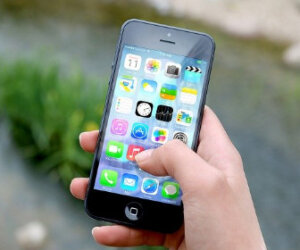A History of Electricity and Its Impact on Planetary and Human Health

The story of the invention and use of electricity has been told before, but never from an environmental point of view. An assumption of safety, and the conviction that electricity has no negative impact on life, are by now so entrenched in the human psyche that new research and testimony by those who’ve been injured are not enough to change the course society has set. In the following excerpt from The Invisible Rainbow, Arthur Firstenberg cites troubling findings that underscore the direct relationship between disease and cell phone use on developing brains and bodies.
The following is from the 2020 Chelsea Green Spring Journal. It has been adapted for the web.
The mountain of truth confronting every cell phone user has only grown larger. Millennials—the generation born between 1981 and 1996 and the first to grow up using cell phones—are experiencing an unprecedented decline in their health when they reach their late twenties. On April 24, 2019, the American health insurance company Blue Cross Blue Shield released a report titled “The Health of Millennials.” It showed not only that the health of this generation takes a sharp decline beginning at age 27, but also that the prevalence of many medical conditions had risen precipitously among millennials in just three years.
The prevalence of eight of the top ten conditions among all millennials showed a double-digit increase in 2017 as compared with 2014. Major depression increased 31 percent. Hyperactivity increased 29 percent. Type II diabetes increased 22 percent. Hypertension increased 16 percent. Psychoses increased 15 percent. High cholesterol increased 12 percent. Crohn’s disease and ulcerative colitis increased 10 percent. Substance use disorder increased 10 percent.
The decline in millennials’ health from 2014 to 2017 was not due to their being three years older.
The report also compared the health of millennials who were 34 to 36 years old in 2017 to the health of Gen Xers who were 34 to 36 years old in 2014. At the same age, millennials in 2017 had 37 percent more hyperactivity, 19 percent more diabetes, 18 percent more major depression, 15 percent more Crohn’s disease and ulcerative colitis, 12 percent more substance use disorder, 10 percent more hypertension, and 7 percent more high cholesterol than Gen Xers had in 2014.
When the researchers looked at all health conditions, they found that 34- to 36-year-olds in 2017 had a 21 percent increase in cardiovascular conditions, a 15 percent increase in endocrine conditions, and an 8 percent increase in other physical conditions compared to 34- to 36-year-olds in 2014.
The only reasonable explanation for the alarming decline in health of the millennial generation is the life-long irradiation of their brains and bodies from their cell phones. Cell phones did not work in most of the United States until 1997, and their use was not prevalent among teenagers until 2000. Millennials are the first generation that began using cell phones in their teenage years or earlier, when their brains and bodies were still developing. People who were 34 to 36 years old in 2017 were 17 to 19 years old in 2000. People who were 34 to 36 years old in 2014 were 20 to 22 years old in 2000. No other environmental factor changed so radically in just three years. Microwave radiation is responsible for the tragic state of the millennial generation’s health compared to the health of every other generation that preceded them.
Recommended Reads
Mercury Fillings and Their Dangers: Never the Right Solution
Recent Articles
The fig tree is more than just a fruit-bearing wonder. The complex nature of these trees is beyond fascinating. They are the ultimate ecosystem superheroes!
Read MorePumpkins: Halloween symbol or sweet treat? But have you ever wondered how they became a holiday staple? Discover the rich history behind this fall favorite!
Read MoreYou’ve Been Missing Out! Bone Broth is the ultimate superfood, packed with nutrients and goodness. Consider adding this nutrient-rich, immune system boosting bone broth into your daily diet.
Read MoreThese small fruits are a delicious source of nutrients that you can find almost anywhere. Get started on acorn harvesting with help from these simple tips!
Read MoreWondering what to do with pumpkin seeds? Instead of roasting them, try these alternative ways to prepare & use seeds! Plus a must-try pumpkin granola recipe.
Read More








